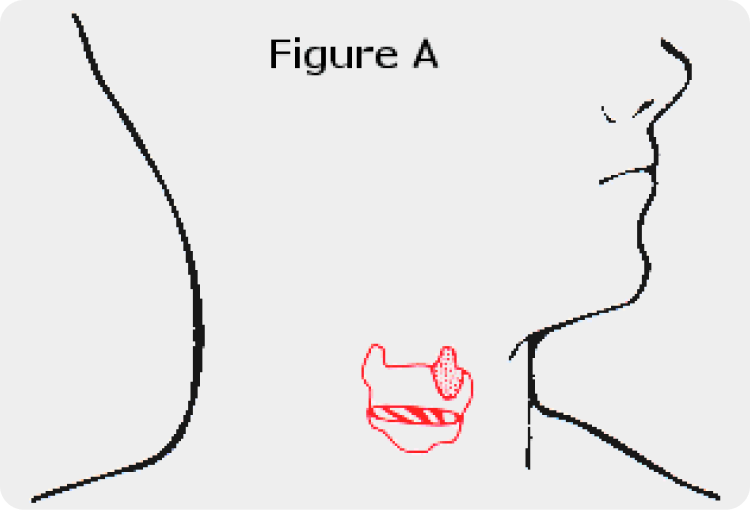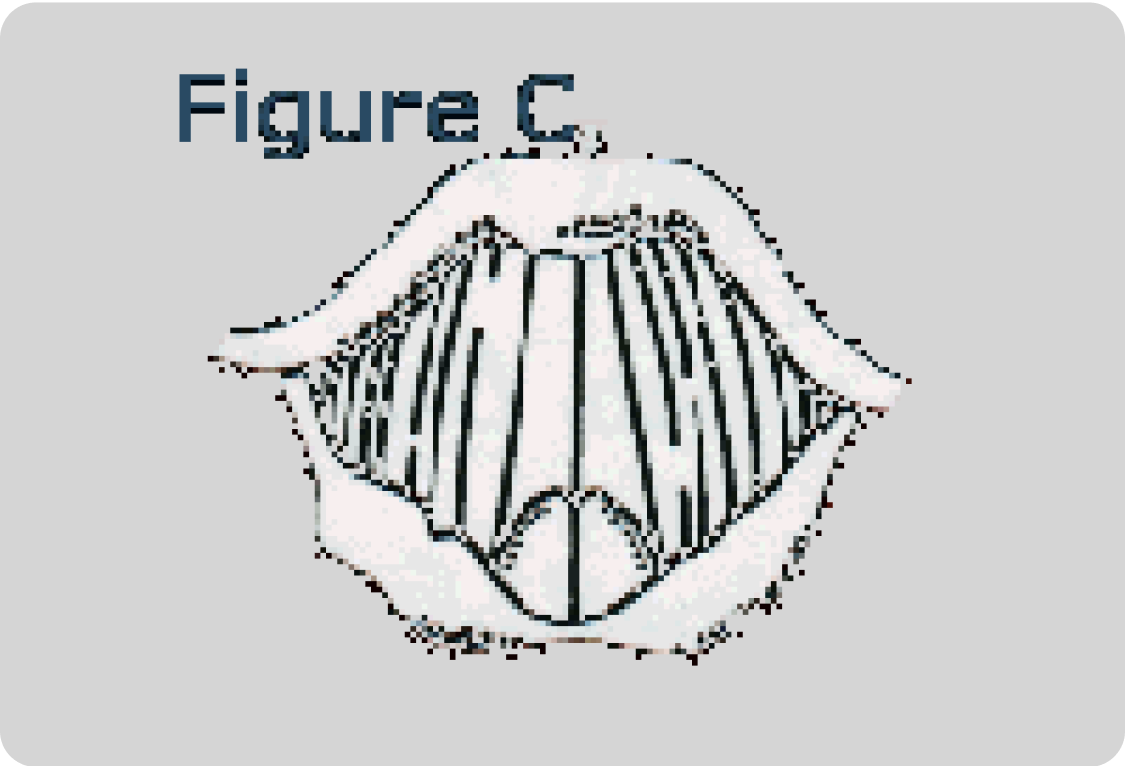Hoarseness and Voice changes

Hoarseness refers to any abnormal changes in the voice, making it sound breathy, strained, or raspy, with variations in pitch or volume. These changes often result from issues affecting the vocal cords, which play a crucial role in voice production.
Hoarseness and Voice changes
What is hoarseness?
Hoarseness is a general term which describes abnormal voice changes. When hoarse, the voice may sound breathy, raspy, strained, or there may be changes in volume (loudness) or pitch (how high or low the voice is). The changes in sound are usually due to disorders related to the vocal folds which are the sound producing parts of the voice box (larynx).

Voice box (larynx)
While breathing, the vocal folds remain apart (figure B). When speaking or singing, they come together (figure C), and as air leaves the lungs, they vibrate, producing sound. The more tightly the vocal folds are held and the smaller the vocal folds, the more rapidly they vibrate. More rapid vibration makes a higher voice pitch. Swelling or lumps on the vocal folds prevent them from coming together properly, which makes a change in the voice.


What can cause hoarseness?
There are many causes of hoarseness. Fortunately, most are not serious and tend to go away in a short period of time. The most common causes are acute laryngitis which usually occurs due to swelling from a common cold, upper respiratory tract viral infection or irritation caused by excessive voice use such as screaming at a sporting event or rock concert. More prolonged hoarseness is usually due to using your voice either too much, too loudly, or improperly over extended periods of time. These habits can lead to vocal nodules (singers nodes), which are callous like growths, or may lead to polyps of the vocal folds (more extensive swelling).
Vocal nodules are common in children and adults who raise their voice in work or play. Uncommonly, polyps or nodules may lead to cancer. A common cause of hoarseness in older adults is gastroesophageal reflux, when stomach acid comes up the swallowing tube (oesophagus) and irritates the vocal folds. Many patients with reflux related changes of voice do not have symptoms of heartburn. Usually, the voice is worse in the morning and improves during the day. These people may have a sensation of a lump in their throat, mucous sticking in their throat or an excessive desire to clear their throat. Smoking is another cause of hoarseness. Since smoking is the major cause of throat cancer, if smokers are hoarse, they should see an otolaryngologist. Many unusual causes for hoarseness include allergies, thyroid problems, neurological disorders, trauma to the voice box and occasionally the normal menstrual cycle. Many people experience some hoarseness with advanced age.
Who can treat my hoarseness?
Hoarseness due to a cold or flu may be evaluated by your family doctor. When hoarseness lasts longer than two weeks or has no obvious cause, it should be evaluated by an otolaryngologist – head and neck surgeon – Dr Murali Mahadevan (ear, nose and throat doctor). Problems with the voice are best managed by a team of professionals who know and understand how the voice functions. These professionals are otolaryngology head and neck surgeons, speech language therapists. Voice disorders have many different characteristics which may give professionals a clue to the cause.
When should I see an otolaryngologist (ENT doctor)?
if hoarseness lasts longer than 2-3 weeks
If hoarseness is associated with: Pain not from a cold or flu, coughing up blood, difficulty swallowing, or a lump in the neck
Complete loss or severe change in voice lasting longer than a few days
How is hoarseness evaluated?
An otolaryngologist will obtain a thorough history of the hoarseness and your general health. The surgeon will usually look at the vocal folds with a mirror placed in the back of your throat. Occasionally a very small lighted flexible scope (fiberoptic tube scope) may need to be passed through your nose (or in some cases, a rigid scope may be used which is placed in the back of your mouth) in order to view your vocal folds. Video examination may also help with the analysis. These procedures are not uncomfortable and are well tolerated by most patients. In some cases, special tests (known as acoustic analysis) designed to evaluate the voice may be recommended. These measure voice irregularities, how the voice sounds (acoustic content), airflow and other characteristics that are helpful in establishing a diagnosis and guiding treatment.
How are vocal disorders treated?
The treatment of hoarseness depends on the cause. Most hoarseness can be treated by simply resting the voice or modifying how it is used. The otolaryngologist may make some recommendations about voice use behaviour, refer the patient to other voice team members, and in some instances recommend surgery if a discreet lesion, such as a nodule or polyp, is identified. Avoidance of smoking or exposure to second-hand smoke (passive smoking) is recommended to all patients. Drinking fluids is also helpful.
Specialists in speech/language therapists are trained to assist patients in behaviour modification which may help eliminate some voice disorders. Sometimes, patients have developed bad habits, such as smoking or overuse of their voice by yelling and screaming, which may cause the voice disorder. The speech/language therapists may teach patients to alter their method of speech production to improve the sound of the voice and to resolve problems, such as vocal nodules. When a patient’s problem is specifically related to singing, a singing teacher may help improve the patients’ singing techniques.
What can I do to prevent and treat mild hoarseness?
If you smoke, quit
Avoid agents which dehydrate the body, such as alcohol and caffeine
Avoid second-hand smoke
Drink plenty of water
Humidify your home
Watch your diet – avoid spicy foods and alcohol
Try not to use your voice too long or too loudly
Seek professional voice training
Avoid speaking or singing when your voice is injured or hoarse (this is similar to not walking on a sprained ankle)

Tonsil and Adenoid
Murali Mahadevan
Specialist ENT Surgeon
For all enquiries and appointments call (09) 925 4050
Suite A, Level 1, Kakariki Hospital
9 Marewa Road
Greenlane, Auckland 1051
Facsimile: (09) 925 4051
Only general information is provided on this web site and is not intended as advice or a consultation. Please read our full disclaimer.

If you're experiencing these symptoms, it's recommended to consult a healthcare professional for proper diagnosis and treatment.
FAQs
Hoarseness can be caused by vocal strain, infections, acid reflux, smoking, allergies, or underlying medical conditions affecting the vocal cords.
If hoarseness lasts longer than two weeks, is accompanied by pain, difficulty swallowing, or a lump in the neck, you should see an ENT specialist.
Yes, acid reflux (GERD) can irritate the vocal cords, leading to hoarseness, a persistent throat-clearing sensation, or a lump-like feeling in the throat.
An ENT doctor may use a mirror, a flexible scope, or video analysis to examine the vocal cords and determine the cause of voice changes.
Treatment depends on the cause and may include voice rest, hydration, speech therapy, medications, or, in some cases, surgery for vocal cord abnormalities.
Avoid smoking, stay hydrated, limit alcohol and caffeine, rest your voice when needed, and practice good vocal hygiene, especially if you use your voice professionally.
Contact Us
Get in touch to book an appointment or inquire about our ENT services. Our team is here to assist you with expert care and guidance.
Ph: +64 9 925 4050
Fax: +64 9 925 4051
Dr Murali Mahadevan FRACS
Otolaryngology Associates Ltd
Suite A, Level 1, Kakariki Hospital
9 Marewa Road
Greenlane, Auckland 1051

